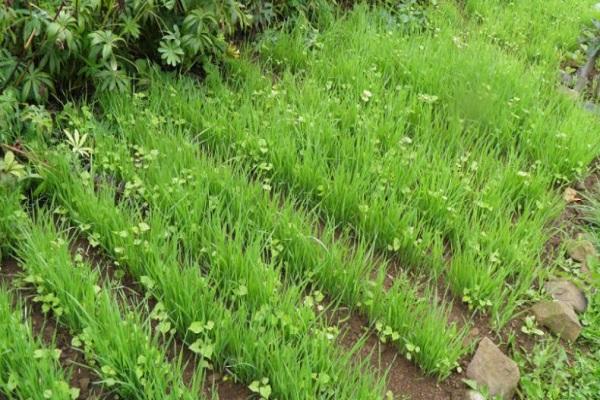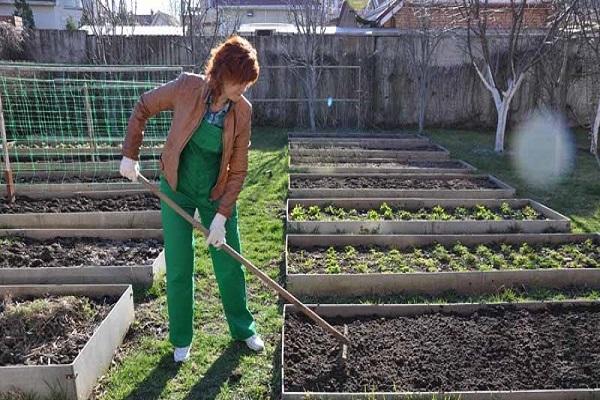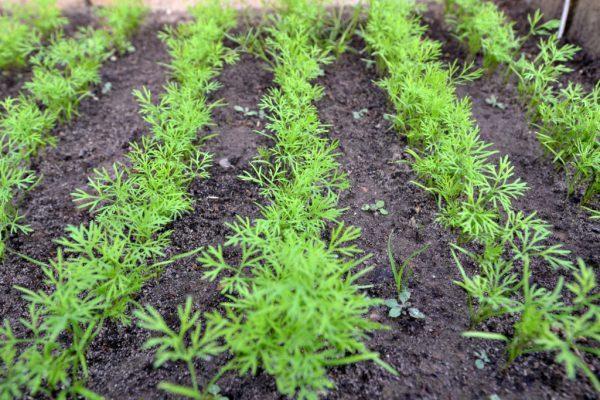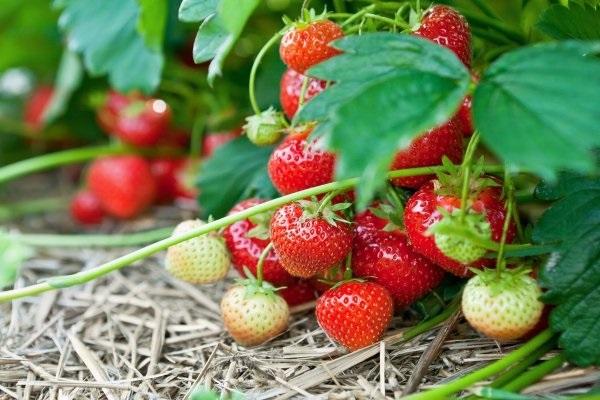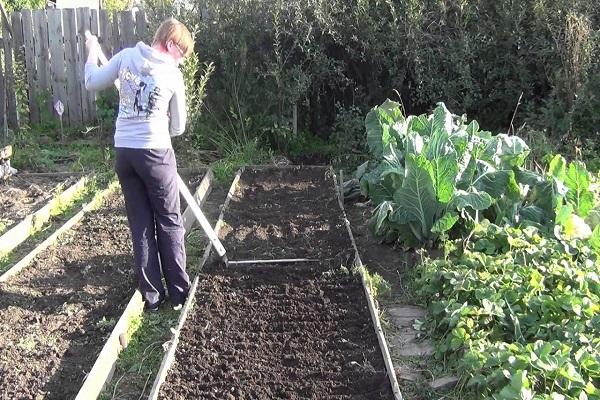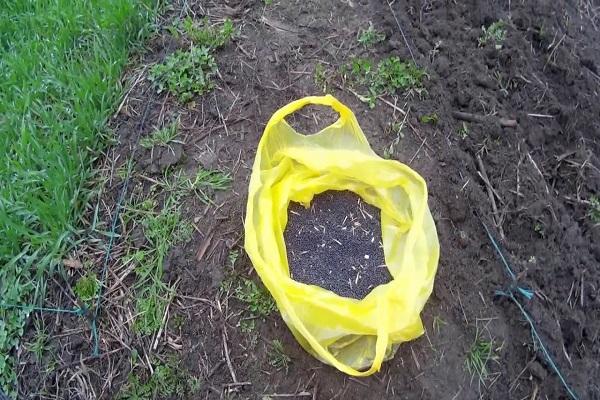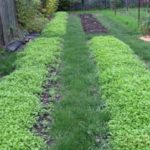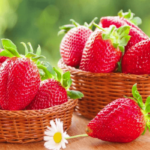Everyone loves to eat strawberries, which is not surprising, because its taste and benefits cannot be overestimated. Owners of vegetable gardens and personal plots grow berries, striving for the harvest to become better from year to year. Without some subtleties it is difficult to do this. Some people resort to fertilizers, while others help the plant with the help of knowledge suggested by nature. So, we suggest you find out what green manure is and how to use it correctly for strawberries.
- Why are green manures needed?
- Advantages and disadvantages
- Sowing dates
- What green manure should I plant in front of strawberries?
- Spring
- Autumn
- What should not be used as green manure
- Will green manure help when growing strawberries in greenhouses?
- Planting methods
- Rules for planting green manure
- Mistakes made when using green manure
Why are green manures needed?
Green manures are plants or a mixture of them that are grown not for the purpose of consumption, but in order to improve the structure of the soil, enrich it with organic matter and essential nutrients. Thanks to their special root system, they are able to extract nutrients from the soil, and after digging them up, the beneficial substances become available to other plants.
Microorganisms influence plant residues from certain crops, which subsequently decompose and turn into humus.
Advantages and disadvantages
Speaking about the advantages of green manure, it is worth highlighting the following:
- Getting rid of weeds. During the growth period, plants are able to crowd out weeds due to the rapid growth of the root system. However, here you should be careful and mow the plant in a timely manner so that it does not end up as a weed.
- Increased fertility. Thanks to certain plants, the soil is filled with nitrogen, which the crops receive from the environment.
- Increase in the amount of organic matter.
- Increased soil looseness. Cereals have a branched root system that divides the soil into clumps.
- Freedom from pests.
- Unimpeded entry of air into the soil.
- Preservation of nutrients in the soil in winter.
- Renewal of soil structure if it is compacted during construction work.
Along with this, there are also disadvantages that those who grow green manure in their garden beds should know, in particular:
- If the plant is chosen incorrectly, you can end up with the opposite of the desired result.So, fertilizer should be selected depending on the type of soil on the site, as well as what crop is going to be grown in a certain place.
- Before sowing, it is necessary to carefully dig up the soil, since otherwise they will not grow as needed and will not provide sufficient green mass.
- If green manure is buried deep in the soil, it will not decompose, but will turn into a peat-like mass.
Sowing dates
Planting green manure for strawberries can be done throughout the season. Some gardeners plant their garden with plants for the whole year, as soon as the harvest is harvested. Therefore, we can conclude that certain plants can be grown throughout the year.
What green manure should I plant in front of strawberries?
Equally important is the correct choice of green manure for strawberries, as well as the time when it needs to be planted. For berries, the best ones are: radish, cosmos, rapeseed, phacelia, mustard, peas, dill, garlic.
Planting green manure in beds is carried out year-round, but it is better to do this in autumn or spring. Next, we propose to understand this in detail.
Spring
In the spring, green manure is planted in close proximity to the holes where strawberries are planned to be grown. As soon as the “helper” plant reaches full growth, there is no need to remove it. So, at first the strawberries will be under some protection from the sun and cool wind. It is necessary to cut off green manure at the moment of flowering. You will need to cut off the tops and mulch them into the ground. The depth for digging should be chosen to be medium, so that oxygen enters the ground, as a result of which the tops will turn into fertilizer.
In the spring, the beds need to be sown with radishes, which, although not distinguished by a large number of useful elements, loosens the soil; buckwheat, which copes well with weeds; legumes; lupine
Autumn
Green manure, which is classified as autumn, is usually planted after picking the berries, most often in August. The plant is brought to the flowering stage, after which it is mowed and plowed into the ground to a depth of no more than 15 centimeters. Among the autumn species, the following are popular: rapeseed, rye, oats, phacelia, and mustard.
Some gardeners use green manure in the form of mulch. They are grown in a separate bed, the green areas are cut off and the free space in the ground is lined with them. Next, the soil is loosened and wood ash is poured on top, which is also covered with mowed grass. All this is moistened from time to time. And in the fall, new plants can be planted here.
What should not be used as green manure
Among the “helper” plants, there are also those that are not suitable for strawberries, and instead of the expected benefit, they bring only harm. It is for this reason that it is worth knowing that berries will not get along with eggplants, tomatoes, peppers, cucumbers and potatoes. In particular, this is due to the fact that the above crops suffer from fungal diseases or Fusarium wilt.
These unpleasant ailments lead to rotting of the root system, but the worst thing is that the disease persists in the ground for a long time, and can infect the least resistant plant planted nearby.
Will green manure help when growing strawberries in greenhouses?
Thanks to green fertilizers, crop rotation of plants in greenhouses is accelerated. This is an indispensable condition for the soil to remain fertile.In a greenhouse you cannot rely on natural crop rotation, so green manure is an alternative. Thanks to their developed root system, they will definitely help to grow berries in a greenhouse. The following crops are used as green manure:
- Legumes.
- Cereals.
- Cruciferous.
Planting methods
It is also necessary to mention the method of growing green manure for strawberries. So, the most common is the inter-row option. As for the berry, it is doubly effective, since during growth the “helper” plant actively protects the delicate strawberry flowers from the scorching sun and wind.
Rules for planting green manure
All plants are planted solely depending on their preference for the soil and ability to survive temperature fluctuations. So, in unsuitable soil, green manure will not grow well, as a result of which it will not be able to fulfill its tasks. For example, if the soil is heavy, you should not plant rapeseed, but buckwheat will take root just fine.
As noted earlier, the best crop in the form of green manure is legumes. Their usefulness for the soil is comparable to the properties of manure. If there is a lack of phosphorus in the soil, it is worth planting rapeseed or white mustard. Buckwheat will compensate for the lack of potassium.
Crops with a specific aroma protect the crop from plant pests.
After mowing the green parts of the plants, they are buried at a distance of no more than 15 centimeters deep. However, such fertilizers can fully provide the berries with the necessary elements for development and growth, so it is worth additionally resorting to mineral fertilizing.
The main thing is to remove the greens from the site in time, before the tops become coarse, otherwise it is difficult for the plants to rot in this form.
Mistakes made when using green manure
The most common mistakes when using green manure:
- Sowing in unsuitable soil.
- Deep plowing of fertilizers.
- Rearranging plants.
- Untimely sowing.

